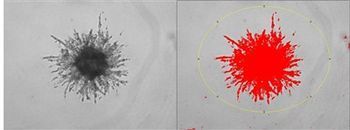
AMSBIO has announced the launch of the 3D Culture 96-Well BME* Cell Invasion Assay to address the growing need for more complete and physiologically predictive cancer invasion models.
Invasive migration is a fundamental function underlying cellular processes such as angiogenesis, embryonic development, immune response, metastasis, and invasion of cancer cells. AMSBIO's new 3D Culture 96-Well BME Cell Invasion Assay offers a flexible, standardized, high-throughput format for quantitating the degree to which invasive cells in 3D spheroid cultures penetrate a barrier consisting of basement membrane components in response to chemo attractants and/or inhibiting compounds.
There is growing evidence that tumor cell aggregates or spheroids provide a more representative model of tumors in vivo than can be achieved with conventional adherent monolayers. Such spheroids exhibit several relevant physiological traits including similar morphology, the formation of cell-cell bonds, decreased proliferation rates, increased cell survival, tumor dormancy, and a hypoxic core. Applying this model to in a 3D culture invasion assay provides a more physiological approach for assessing tumor invasion and providing a visual component that can be quantitated through image analysis.
The new 3D Culture 96 Well BME Cell Invasion Assay uses a 3D Culture Qualified 96-Well Spheroid Formation Plate alongside a specialized Spheroid Formation extracellular matrix to drive aggregation and/or spheroid formation of cells. Upon completion of spheroid formation, the spheroid is embedded in an invasion matrix composed of basement membrane proteins. This matrix forms a hydrogel network on which invasive cells can travel. At this point, invasion modulating agents can be applied to the system to evaluate the impact on cell response. Cell invasion is visualized microscopically and can be quantitated through image analysis software.
